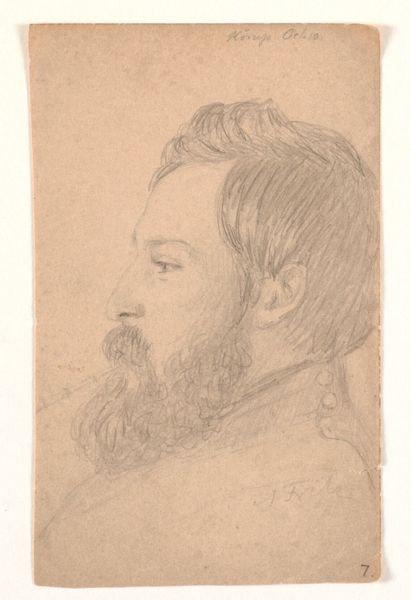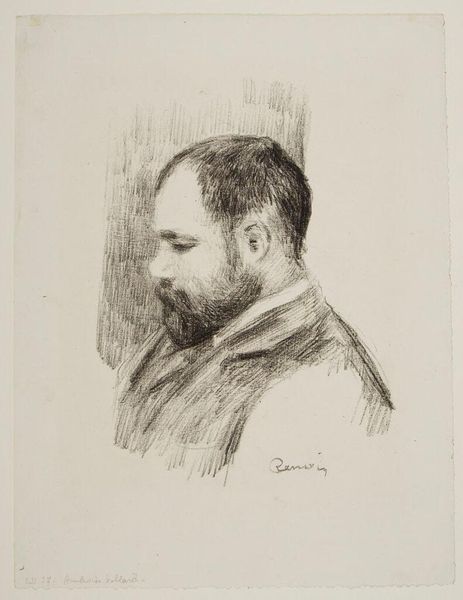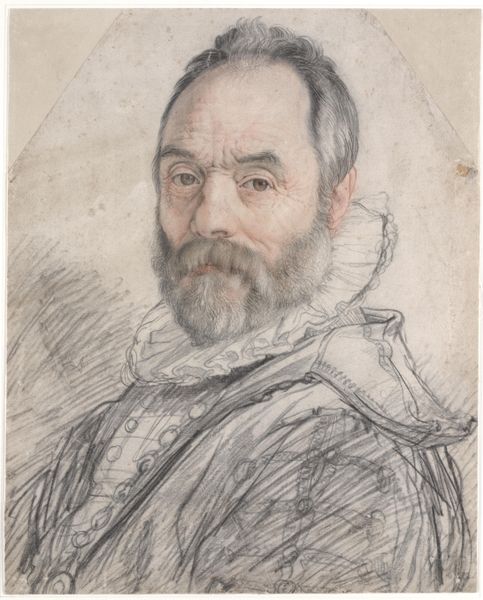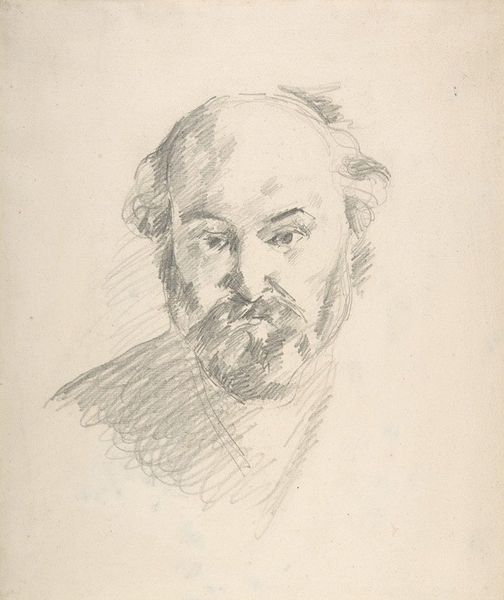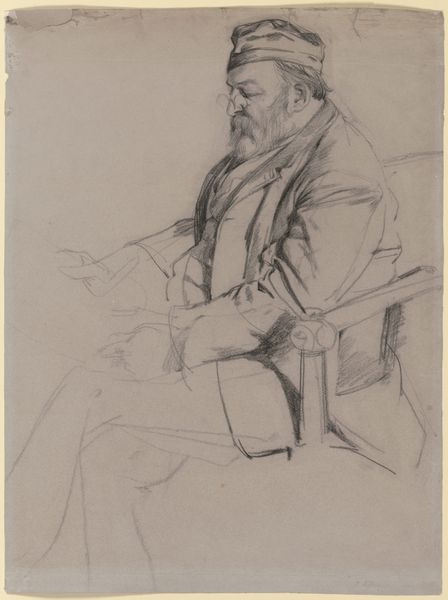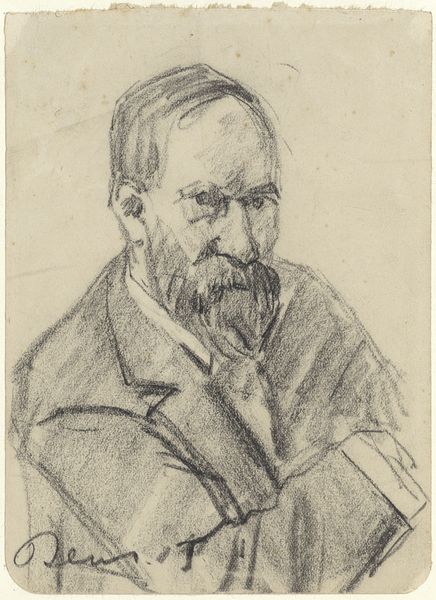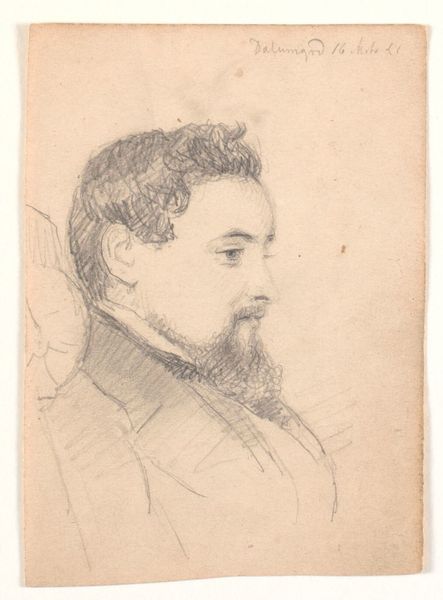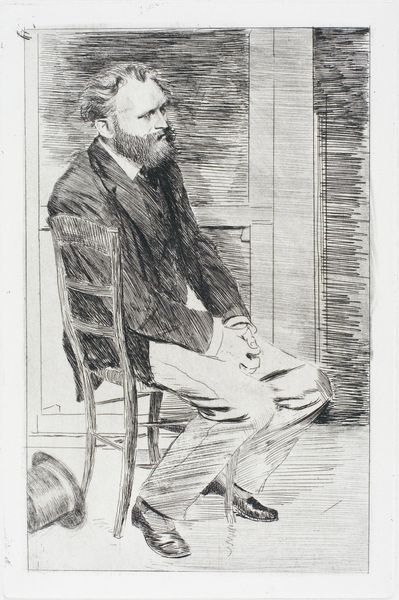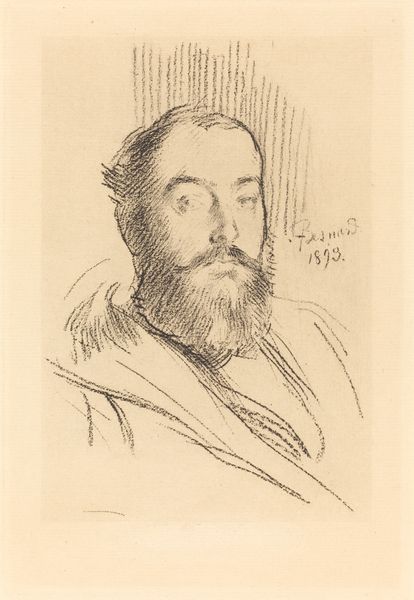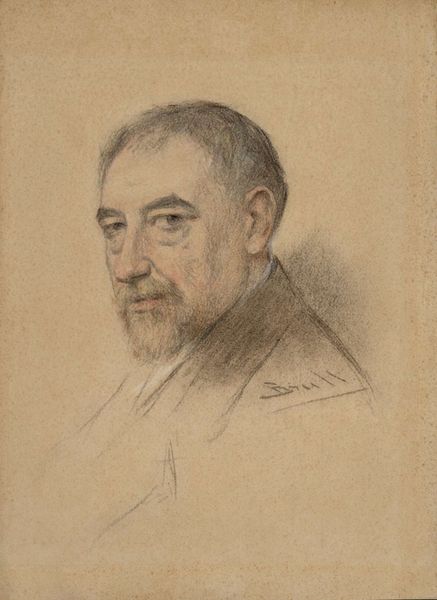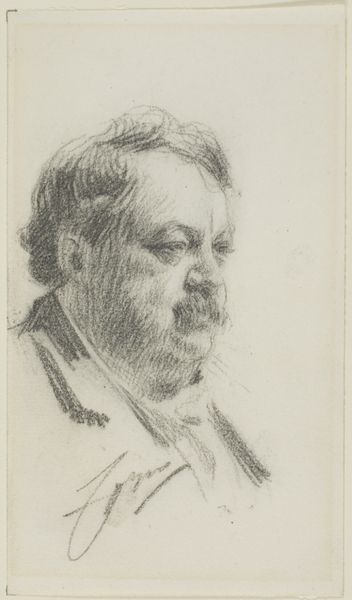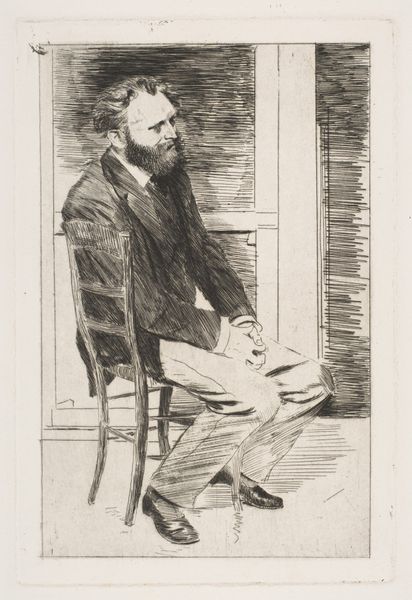
drawing, print, etching, paper, dry-media, pencil
#
portrait
#
pencil drawn
#
drawing
# print
#
etching
#
pencil sketch
#
charcoal drawing
#
paper
#
dry-media
#
pencil drawing
#
pencil
#
portrait drawing
#
realism
Dimensions: 139 × 90 mm (plate); 379 × 285 mm (sheet)
Copyright: Public Domain
Editor: This is Marcellin Desboutin's 1875 portrait of Emile Zola, rendered in etching on paper. It’s striking how a few lines can convey such thoughtful contemplation; he looks incredibly pensive. How do you interpret this work? Curator: The pose is everything, isn’t it? Hand to the face…a very old visual trope for intellectual activity and melancholia. Think of Rodin's Thinker or any number of depictions of philosophers throughout art history. Desboutin consciously taps into this tradition, linking Zola, the intellectual, to centuries of deep thought and inquiry. What visual elements draw your attention? Editor: Definitely the stark simplicity! It feels so immediate and personal. It’s just… him, thinking. But also the visible, delicate lines! It doesn't try to hide its creation, somehow reinforcing the sincerity of the piece. Curator: Precisely! The unadorned lines contribute to the feeling of authenticity, rejecting idealized representations. Desboutin likely sought to capture Zola's character, a writer known for unflinchingly depicting reality in his novels. This "warts and all" approach was gaining traction in a society eager to see itself reflected honestly. Do you see any symbolic resonance between the technique and Zola's literary output? Editor: Oh, I hadn't considered that. Like, the etching's starkness echoes Zola’s naturalism, and stripping bare the surface is also about the truth! Wow, I'll never look at portraits the same way again. Curator: Indeed. This seemingly simple image contains a wealth of cultural and artistic information, connecting past traditions to contemporary concerns.
Comments
No comments
Be the first to comment and join the conversation on the ultimate creative platform.

